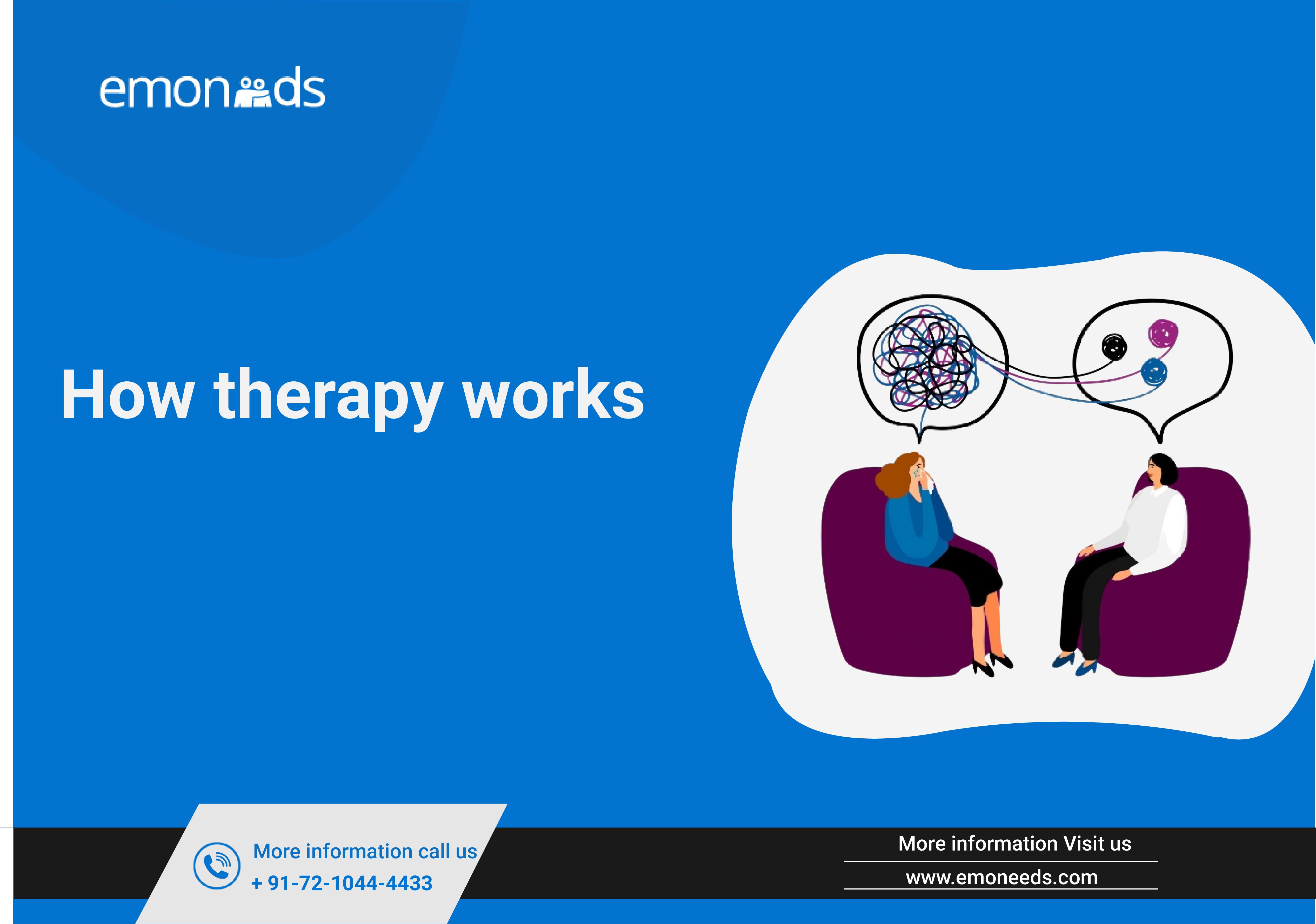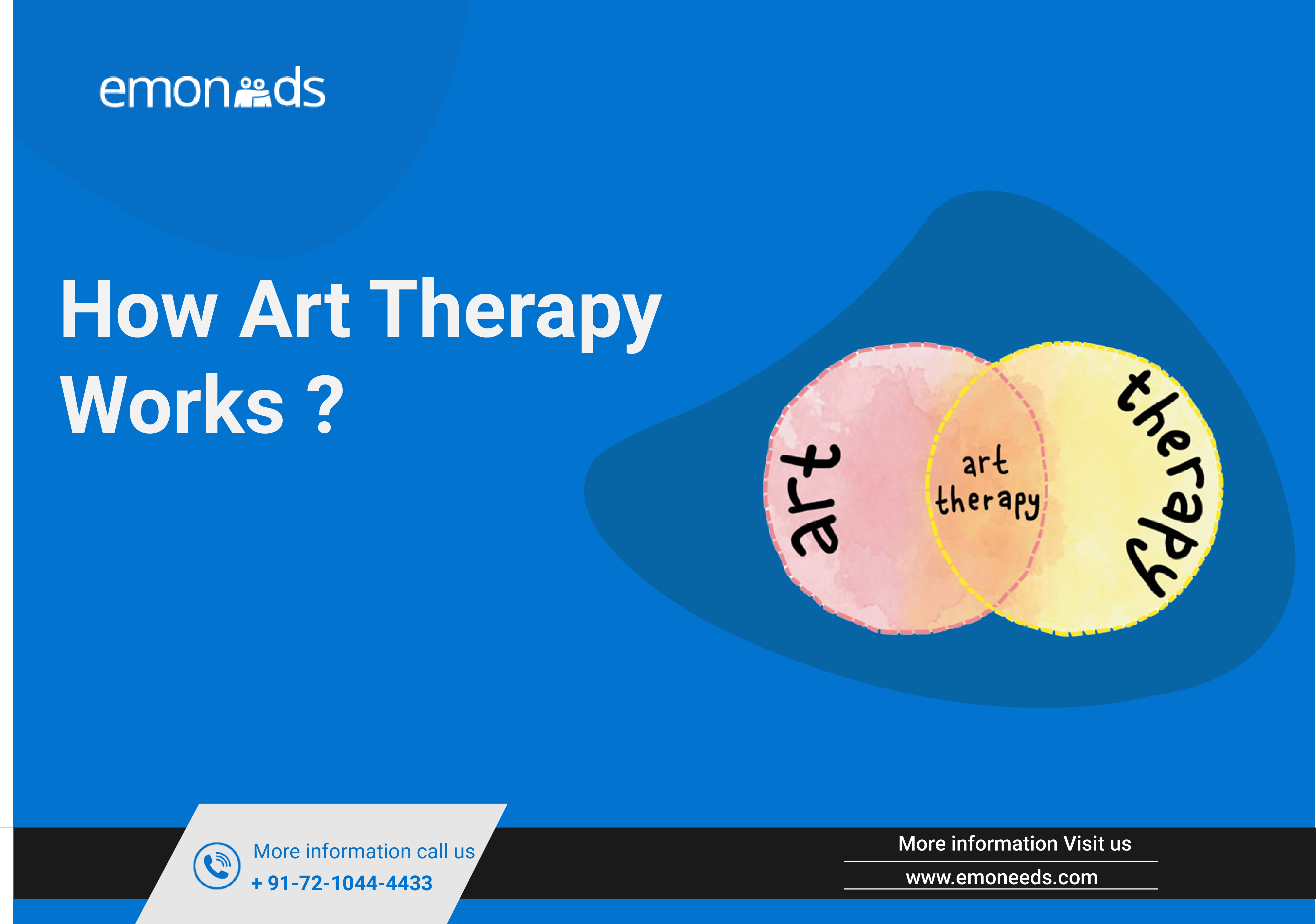
- August 7, 2023
- Saloni Kabra
- 0
Table of Contents
Toggle"The curious paradox is that when I accept myself just as I am, then I can change." - Carl Rogers
Written by: Paridhi Talwar
Therapy is a work of insight
Also known as Psychotherapy; it is a voluntary collaborative process that requires a robust therapeutic alliance between a client and therapist that aims to help individuals, couples, families or groups improve their mental well-being by reducing emotional, social, psychological and behavioural disturbances to bring about adaptive and healthy changes in their lives.
Here’s a general overview of how therapy typically works:
- Initial assessment: The therapy process usually begins with an initial assessment session. During this session, the therapist gathers relevant information about the client’s background, current concerns, and goals for therapy. This helps the therapist understand the client’s unique situation and tailor the treatment approach accordingly.
- Building rapport and establishing a professional relationship: Developing a trusting and collaborative relationship between the therapist and the client is crucial. The therapist creates a safe and non-judgmental space where the client feels comfortable expressing their thoughts, feelings, and experiences, as well as maintaining a professional decorum with appropriate boundaries.
- Setting goals: Together, the therapist and the client identify specific goals they want to work towards. These goals may involve resolving a specific issue, improving coping skills, enhancing self-esteem, developing healthier relationships, or gaining insight into one’s emotions and behaviours.
- Treatment planning and intervention: Based on the client’s goals and individual needs, the therapist selects appropriate therapeutic interventions. There are various eclectic therapeutic approaches, such as cognitive-behavioural therapy (CBT), psychodynamic therapy, humanistic therapy, Mindfulness-Based therapy, creative and expressive based therapies ,Acceptance and commitment therapy and dialectical behaviour therapy and many newer schools of therapies are applied. The therapist may use a combination of techniques to address the client’s concerns effectively.
- Regular therapy sessions: Therapy typically consists of regular sessions that occur weekly or biweekly, depending on the client’s needs and availability. During these sessions, the client and therapist engage in open and honest dialogue. The therapist listens attentively, asks relevant questions, and provides guidance, support, and feedback. The client is encouraged to explore their thoughts, emotions, and behaviours, gain self-awareness, and develop new perspectives and coping strategies.
- Skill-building and self-improvement: Therapy often involves learning and practicing new skills to manage challenges more effectively. These skills may include stress reduction techniques, communication strategies, problem-solving skills, relaxation exercises, or cognitive restructuring to challenge negative thought patterns. The therapist may assign homework or provide resources for the client to work on between sessions to reinforce progress.
- Monitoring progress: Throughout therapy, the therapist regularly assesses the client’s progress towards their goals. They may use various measures, such as self-report questionnaires or observations, to evaluate changes in symptoms, functioning, or overall well-being. If necessary, the therapist may adjust the treatment approach or goals to better meet the client’s needs.
- Termination and follow-up: When the client and therapist believe that the goals have been achieved or significant progress has been made, they discuss and plan the termination of therapy. This includes reviewing the progress made, discussing strategies for maintaining the gains, and addressing any concerns about ending therapy. In some cases, clients may choose to continue with maintenance sessions or return to therapy if new challenges arise.
It’s important to note that therapy is a work in progress and the outcome depends on the client’s active participation, willingness to explore, and openness to change. The therapist serves as a guide and facilitator, supporting the client on their journey towards improved mental health and well-being.











